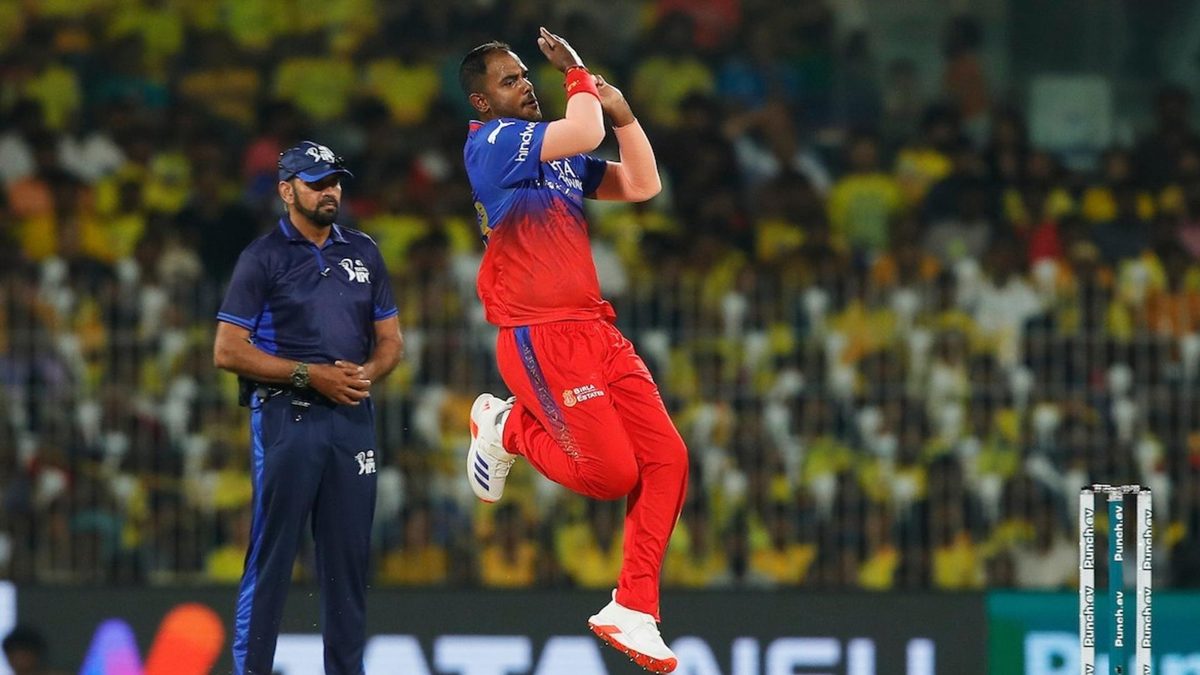
selection for India's home Test series against Bangladesh is uncharacteristic, but potentially a wise choice.
How many left-arm pacers have there been in India's Test history?
Since the end of World War II, a total of 349 pace bowlers have bowled in at least 20 innings in men's Test cricket. 49 of them have been left-handed. India have had six of these left-arm pacers, out of a total of 29 pace bowlers who have bowled at least 20 times in Tests in this time period. Rusi Surti and Karsan Ghavri were two, in the 1960s and 1970s respectively.
Also read: 'Anyone can get out first ball' – Moin questions Pakistan's U-turn on son Azam Khan
But in the early 2000s, there was a sudden burst of them. (1999), (2000), (2003) and (2006) all debuted within seven years of each other. Of these four, only Zaheer made it past 30 Test matches, playing 92 over 14 years. Pathan played 29, but partly because much of his value for India came from his ability to bat as well.
Nehra never played a Test match after 2004, and Pathan after 2008 with both of them being prioritised for white-ball cricket. RP Singh last played in 2011. The upshot of all this is, since Zaheer Khan, India have pretty much never played a left-arm pacer regularly in Test cricket.
In fact, here is a fairly shocking figure: Since Zaheer retired in February 2014, the combined experience of Indian left-arm pacers in Test cricket is four matches – three for Jaydev Unadkat and one for T Natarajan. Only Afghanistan (one match) have a lower number.
Of course, this has not mattered to their success. India have been a formidable Test unit in the last ten years, and to claim there is a relationship between their results and the prevalence of this bowling type would be a reach. The likes of Mohammed Shami, Ishant Sharma, Umesh Yadav, Bhuvneshwar Kumar, Jasprit Bumrah and more have shown themselves to be more than capable of helping India take 20 wickets.
Yash Dayal bucks the trend
When India's squad for the Test series against Bangladesh was announced earlier this week, left-arm seamer Yash Dayal received his maiden call-up. Reports on the day suggested that the Indian think-tank was "desperate" to include a left-armer, with a view towards the tour of Australia later this year.
For the individual himself, the selection has proven to be the peak of a gripping redemption arc. Ever since he was hit for five sixes in an over by in 2023, Dayal has gone from strength to strength in white-ball cricket as well as continuing his solid form in domestic red-ball cricket.
While unconfirmed, it had also been reported that Dayal's main competitions for a spot in the Test side were Arshdeep Singh and Khaleel Ahmed – both left-armers, who have played white-ball cricket for India. However, they did not impress during the first round of the ongoing Duleep Trophy, while Dayal did.
It is interesting to note a potential difference in approach between India's new team management led by Gautam Gambhir and the old one where Rahul Dravid was in charge. A question on the lack of Indian left-armers had been posed to Dravid in February 2023, to which he said the following.
"We do look at it [whether pacers are right- or left-handed], we know the importance but if you're only a left hand fast bowler then you cannot be considered. Be it Zaheer Khan or Ashish Nehra, they didn't get a chance just because they were a left hand fast bowler but they were good."
Why might India want a left-arm pacer?
There are a couple of obvious benefits to picking a left-arm seamer. For one, it can help a team break the consistency of right-armers delivering from a particular angle, thereby giving batters something else to think about.
In addition, left-armers bowling from over the wicket can help to create rough patches outside a right-hand batters' off-stump, which can make off-spinners more dangerous in the third and fourth innings.
Dayal's selection may signal a potential shift in focus for India, to a profile-first approach. This was somewhat visible during the Gambhir's first series in charge – the white-ball tour of Sri Lanka – as India were intent on maintaining right-left batting pairings throughout the innings.
South Africa's Test series in Bangladesh from October 16 is likely to go ahead as planned despite the recent political upheaval in the country.
— Wisden (@WisdenCricket) September 14, 2024
READ: https://t.co/eATn9m40Ub#BANvSA pic.twitter.com/jBB698WpCC
The upside of such an approach is that there are likely to be clearly-defined slots for players to fit into. For example, a player like Akash Deep, a right-arm pacer, might know that someone like Dayal, or Arshdeep Singh, is not necessarily threatening his spot in the squad.
But the downside can lead down a dangerous path. As long as the consensus is, as Dravid had implied, that the player selected for a particular profile is among the best options irrespective of said profile, there is no worry. But if these two points start to be at loggerheads with each other, it has the potential to open a can of worms.
If India are indeed keen on implementing profile-based selections even in the long format, it will be interesting to see which way things pan out.
Follow Wisden for all cricket updates, including live scores, match stats, quizzes and more. Stay up to date with the latest cricket news, player updates, team standings, match highlights, video analysis and live match odds.








